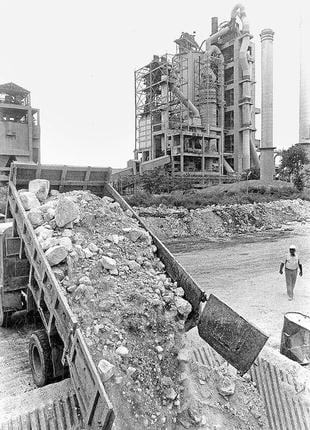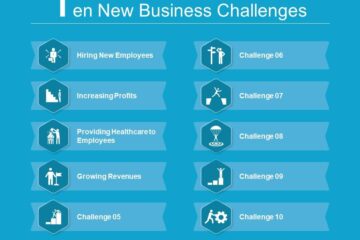
The island of Rameswaram off southern Tamil Nadu holds cultural significance for worshippers of Rama. It is from here, the faithful believe, that Rama and his army of monkeys built a bridge to Sri Lanka to march across to vanquish the demon king Ravana and retrieve the abducted Sita.
Agnostics dismiss such mythological allusions to bridge-building in ancient times, but Rameswaram is very tangibly connected to the mainland by two undisputably strong bridges built in more modern times: the more famous of them is the railway line built in 1914, with a cantilever bridge system that is universally acknowledged as an engineering marvel.
More recently, a road bridge opened in 1988 — and as an ad copy for India Cements notes, the bridge’s sturdiness rests on the reputation of the hardiness of Sankar Cements from the company’s iconic factory at Sankar Nagar in Tirunelveli, one of the country’s oldest.
More such testaments to the solidity of structures built with Sankar Cements abound: for instance, the Kudankulam nuclear power plant, whose Unit 1 was commissioned barely days ago; and the Hyderabad airport, widely acknowledged as a design marvel…
In this sense, and in every other sense, the contribution of India Cements, which was founded a year before India’s Independence, to the project of “nation-building” cannot be contested.
The early days
From his 10th-floor office at India Cements’ corporate headquarters in Chennai, Vice Chairman and Managing Director N Srinivasan draws a mental picture of what it must have been like to get into business back then.
“Imagine the 1940s, as India was becoming independent, when even telephones, where they did exist, were a luxury. Communication was through letters,” he says. “A group of people found limestone, decided to make cement, identified a company (in Denmark) to supply the equipment, went over and met them, and finally set up a factory in a sleepy little Tamil Nadu village. The sheer commitment, dedication and effort are monumental.”
Founded by SNN Sankaralinga Iyer (after whom the township in Tirunelveli is now named) and TS Narayanaswami (Srinivasan’s father), India Cements is today a ₹5,000-crore company with a production capacity of about 16 million tonnes a year.
But like Rome, the company wasn’t built in a day.
India Cements started with a 300-tonne-per-day kiln and ramped it up in stages. Later, in 1963, it set up a plant at Sankari, near Salem, with three kilns of 600 tpd, or about 6 lakh tonnes a year. Between the two plants, production capacity increased to 1.5 million tonnes.
Control, then competition
But those were the years of acute cement control, when Nehruvian socialist policies cramped the space for private players. In 1956, the State Trading Corporation had the monopoly on cement distribution. Everything was determined by the state — from capacity to purchase price. Some of the fetters on distribution controls came off partially in 1966, but were quickly clamped back the following year.
Srinivasan joined the business briefly after his father died in 1968, but returned to it only in 1989 — as Managing Director.
By then, the regulatory landscape had changed dramatically. In the early 1980s, a hint of decontrol happened: old units were allowed to sell a third of their produce in the open market, the quota for sick units was half of their production, and new units had a lot more freedom.
Later that decade, in Budget 1989, Finance Minister SB Chavan acknowledged that partial decontrol had worked: production had doubled, imports had stopped, and in fact India was exporting cement. He therefore announced decontrol of the industry.
Expansion phase
Sensing the opportunities ahead, Srinivasan launched into capacity expansion, both organic and inorganic. “We bought the cement division of Coromandel Fertilisers at Chilamkur, expanded with a greenfield project at Dalavoi, and the Sankar Nagar plant was converted to dry process,” he recalls. Additionally, India Cements bought the Visakha Industries plant, and Cement Corporation of India’s Yerraguntla Cement plant in an auction. In 1998, it also acquired Raasi Cements in something of a coup. But after a period of rapid expansion, India Cements, as indeed the entire cement industry, faced a hard landing. Demand dropped, accentuating the overcapacity, and dragged the company into a fund crunch. India Cements went through the wringer of a Corporate Debt Restructuring programme, selling the Shri Vishnu Cement plant, but came through well enough. And when it came across undervalued assets, it bought them up.
For instance, the Trinetra plant in Rajasthan was incomplete — the promoters had abandoned the project;so, India Cements took it over and saw it to fruition. “We also set up two grinding units in Parli, Maharashtra, and in Chennai, converted to dry process at Sankari. Overall capacity is now close to 16 million tonnes,” notes Srinivasan.
The cement cycle
The cement industry, says Srinivasan with a touch of stoicism, goes through such cycles, and has always been known to create capacities ahead of demand, even though it sometimes suffers. In any case, the company is well positioned to ride the cycle when demand picks up. “We may even have to think of further capacity expansion,” he reckons.
It is with the same straight bat that he responds to inquiries about what some see as the reputational damage caused to India Cements from its entanglements with IPL and its ownership of the Chennai Super Kings franchise.
The company has always been known for its cricket sponsorship, and in fact when the BCCI called for IPL franchises, India Cements was invited to participate, he adds. “This is a little-known fact.” Even then, for the sake of propriety, “we asked BCCI if it would be alright to participate, and secured a letter from then president Sharad Pawar.”
Again, out of a sense of propriety, India Cements bid for the franchise, he adds. “We have always spent on sports, and have never profited from it,” he asserts.
[Source: Business Line]




